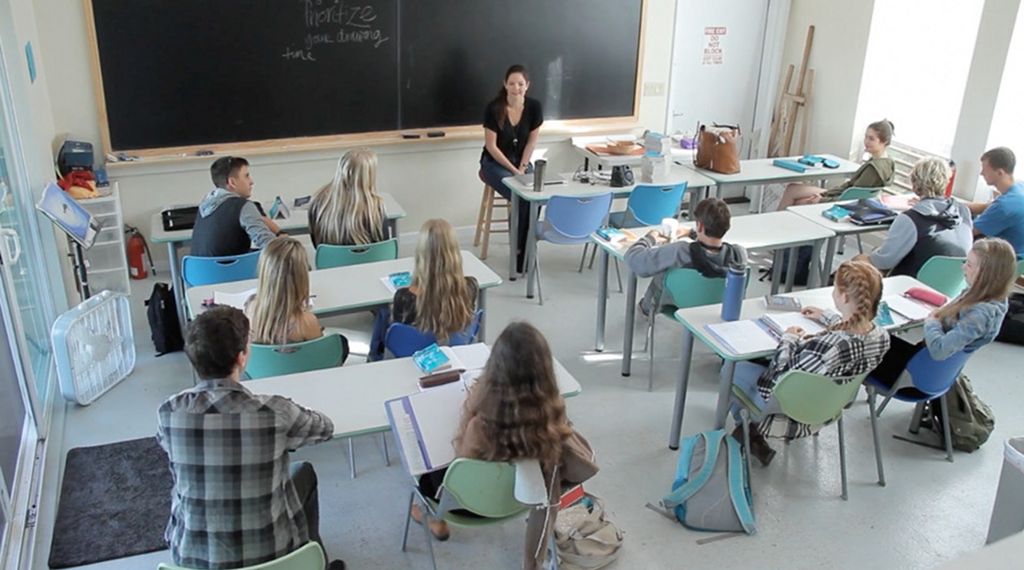
The educational landscape in the United States has always been diverse, from traditional public schools to charter schools, and from Montessori institutions to homeschooling setups. Yet, amid this vast array, Waldorf schools are carving out a distinctive niche, as many parents and guardians increasingly seek alternative education for their children. In this article, we delve deep into why Waldorf schools are gaining popularity in the US, while also addressing some criticisms and reviewing their unique approach.
What are Waldorf Schools?

Originating in Germany in 1919 and inspired by the teachings of Rudolf Steiner, Waldorf schools prioritize a balanced approach to education. This involves nurturing the child’s intellectual, artistic, and practical skills in an integrative way. The Waldorf curriculum is based on a deep understanding of human development, ensuring that children not only gain academic prowess but also cultivate their innate creativity and emotional intelligence.
Why Waldorf Schools are Flourishing in the US

Holistic Education: Waldorf schools see students as more than just future workers or college applicants. They view each child as a whole being, and their curriculum reflects this. Lessons are designed to feed the mind, heart, and hands.
Art-Integrated Learning: Many parents are drawn to Waldorf’s emphasis on arts and creativity. Whether it’s through painting, drama, or music, Waldorf students frequently engage in artistic endeavors, aiding in cognitive and emotional development.
Emphasis on Nature: With tech-centric lives becoming the norm, Waldorf schools offer a refreshing break. Outdoor play, gardening, and nature walks are integral parts of the Waldorf experience, fostering a strong connection with the environment.
Building Strong Communities: Waldorf schools in the US prioritize community-building. Festivals, plays, and communal meals are regular features, strengthening bonds among students, teachers, and parents.
Waldorf High Schools in the US

While many people are familiar with Waldorf education at the elementary level, Waldorf high schools in the US are also on the rise. These institutions extend the foundational Waldorf principles into the teenage years, preparing students for both college and life beyond. With a rigorous academic curriculum blended with artistic and practical activities, Waldorf high schools offer an enriching education that’s in tune with adolescent developmental needs.
Addressing Waldorf Schools Criticism
No educational system is immune to criticism, and Waldorf schools are no exception. Some common Waldorf schools criticism include:
- Delayed Academics: Critics point out that reading and other academic subjects are introduced later compared to other schools. However, Waldorf educators argue that this allows children to develop at their own pace, laying a stronger foundation for future learning.
- Esoteric Elements: Some aspects of Waldorf education, rooted in Rudolf Steiner’s anthroposophical philosophy, can appear esoteric to outsiders. Yet, many parents find value in the spiritual depth it brings to the education.
- Cost: Like many private institutions, Waldorf schools can be costly. However, many schools offer sliding scale tuitions, scholarships, or work-trade programs to make the education more accessible.
Waldorf Schools Reviews: What are Parents Saying?
For a well-rounded perspective, it’s crucial to hear directly from those with firsthand experience. Numerous Waldorf schools reviews indicate a high degree of satisfaction among parents and students. Many praise the schools for fostering creativity, instilling a love for learning, and building strong moral values. While not every review is glowing, the overall sentiment leans towards appreciation for the holistic, nurturing environment.
Waldorf Education Beyond the Classroom

Beyond the standard classroom setting, what truly sets Waldorf schools apart is their commitment to cultivating a genuine love for lifelong learning. They foster environments where questioning is encouraged, and students are equipped with the tools to be independent thinkers and researchers.
The Global Perspective: Waldorf Schools Internationally
While our primary focus has been on the rise of Waldorf schools in the United States, it’s worth noting that this movement is international in scope. Globally, Waldorf education has been received with enthusiasm, mirroring its acceptance in the US. This international perspective allows Waldorf students to connect with a broader community, often leading to cross-cultural exchanges and a global citizenry outlook.
Potential Challenges for the Future
As with any growing movement, Waldorf education in the US is poised to face challenges. Rapid expansion may strain the availability of trained Waldorf teachers. Ensuring that these schools maintain the core Waldorf principles while adapting to the evolving educational landscape of the 21st century will be crucial.
Moreover, as more people become aware of the Waldorf approach, there’s a risk of dilution or commercialization. Maintaining the essence of Waldorf education — its commitment to holistic human development — will be paramount.
Integrating Technology in Waldorf Schools

In a rapidly digitalizing world, a common question parents and educators have is about the integration of technology in Waldorf schools. Historically, Waldorf education has been cautious about the early introduction of screens, preferring hands-on, experiential learning over digital interactions.
However, as the world evolves, so too does Waldorf education. While the primary years might still emphasize tangible learning experiences, Waldorf high schools in the US are beginning to integrate technology in ways that align with their foundational principles. Instead of viewing technology as a mere tool, Waldorf schools approach it as another medium for artistic and cognitive expression, ensuring that when introduced, it’s done so mindfully.
Waldorf Schools and College Preparation

Another topic on many parents’ minds is the readiness of Waldorf students for college and beyond. Thanks to their holistic curriculum, Waldorf students often demonstrate strong problem-solving abilities, creativity, and critical thinking – skills highly coveted in higher education and the job market.
While the approach might be non-traditional, many Waldorf graduates transition smoothly into prestigious colleges and universities. They often stand out for their self-driven learning approach, leadership qualities, and their ability to view issues from multiple perspectives.
Conclusion
As the modern world becomes increasingly complex and digitalized, many parents are seeking educational avenues that offer a balance. Waldorf schools in the US present an alternative that promises not just academic excellence but also a focus on the arts, moral development, and a connection with nature.
While criticisms and challenges exist, the overwhelming feedback from parents, teachers, and students underscores the transformative impact of Waldorf education. Its continued growth and popularity are testaments to its relevance and resonance in today’s world.
If you’re a parent pondering about the future of your child’s education or an educator seeking fresh perspectives, it might be worth visiting a Waldorf school nearby. Experience the environment, interact with its community, and observe its methodology. You just might discover an educational philosophy that aligns with your values and aspirations for holistic human development.
To further explore the world of Waldorf education and its intricacies, feel free to dive into these detailed Waldorf schools reviews and gain insights from both supporters and skeptics.











